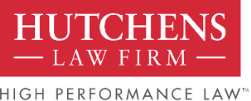The old Scrivener’s Affidavit Gets Some Teeth
A new statute in North Carolina creates a process by which some legal description errors can be corrected without litigation.
You’ve recorded your deed of trust and later discover that there is a mistake in the document. The subdivision name is misspelled, the legal description recites an incorrect plat page, or there’s a typo in one of the calls in the legal description, for example. So long as the error is not fatal to the lien (i.e., the instrument is otherwise legally valid or the property is otherwise identifiable), these types of mistakes could historically be corrected with a Scrivener’s Affidavit, otherwise known in North Carolina as an “Affidavit of Correction” pursuant to N.C. Gen. Stat. § 47-36.1. That statute allowed the drafter of the instrument to record an Affidavit which described the error and clarified the correct information for the record in the hopes that the typo would not be carried forward in subsequent instruments.
The Statute was intended to be used only for typographical errors. These are the kinds of errors that do not materially affect the interpretation of the instrument or the description of the property; the kind of thing you can look at and “know”, in light of the rest of the information in the document, is a typo. An angle of 790 degrees, a page number that doesn’t exist, or a call that runs for 100 acres rather than feet, for example. A simple typo could be pointed out and clarified, for the record, by a simple affidavit.
In recent years, this simple affidavit morphed into a cure-all. Title vendors and even some lawyers began using them in situations where the mistake was more severe. In one example, such an affidavit was used in an attempt to add a legal description where one had not existed. In another, a different lot number was substituted for the one stated in the original instrument. In a third, a completely different plat of similar property was swapped. These kinds of changes call into question the original intent of the parties and change the legal effect of the instrument. Thus, they require the consent of the original parties and the attempts to correct them otherwise fail as a matter of law.
To stem this abuse and clarify the process for correcting errors in recorded documents, the North Carolina legislature has passed House Bill 584 which is effective on August 31, 2018. The statute clarifies the use of the old scrivener’s affidavit, now referred to as a “Corrective Notice” and creates a process for making true corrections to legal description errors.
The revisions emphasize that only a “nonmaterial typographical or other minor error” may be the subject of a Corrective Notice. It goes on to provide that “… an error that would affect the respective rights of any party to the instrument” is not such an error. In other words, if the mistake is one that would require the signature of the parties to correct, the affidavit is not a proper cure.
The legislature went a bit further and provided a process by which obvious description errors could be cured. This process must be undertaken by an “Authorized Attorney” who is licensed in North Carolina and who drafted the instrument, represents a party to the instrument or represents a title insurer of the property. First, a “Notice of Intent” to cure, along with a copy of the proposed unsigned curative affidavit, must be served on all parties to the instrument and anyone who would be affected by the correction. Service must be made in the same way a summons and complaint are served in North Carolina which includes certified mail. Following receipt of the Notice, the person served has 30 days to object in writing to the affidavit or dispute the facts underlying same. If no objection is received and 45 days have elapsed since the last person was served, the authorized attorney may then sign and record the affidavit.
While the old scrivener’s affidavit highlights a mistake and puts the world on notice of a correction going forward, the new statute provides a process to actually cure the error, which cure relates back to the original recording date of the instrument.
The legal question of whether an error is “material”, and thus whether these statutes are appropriate in a given situation, depends on many factors and should be answered by a North Carolina attorney who is familiar with the laws concerning title to real property.
Published by Lanée Borsman on July 31, 2018.
